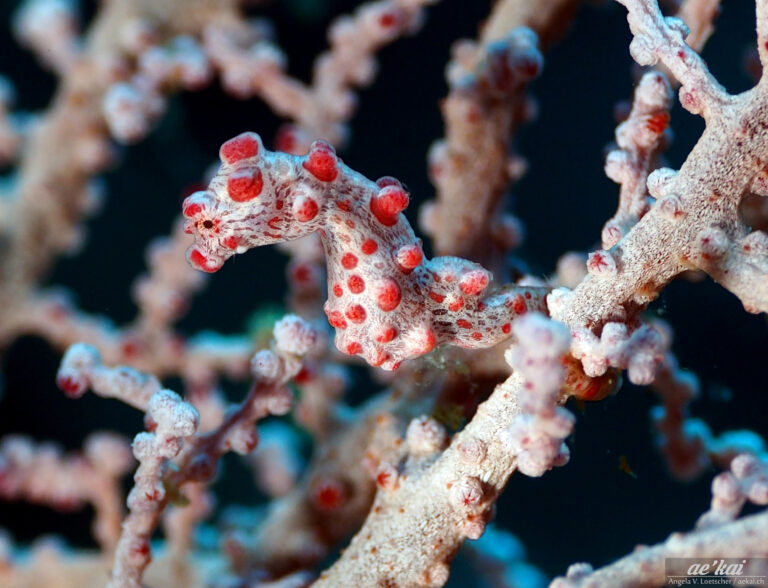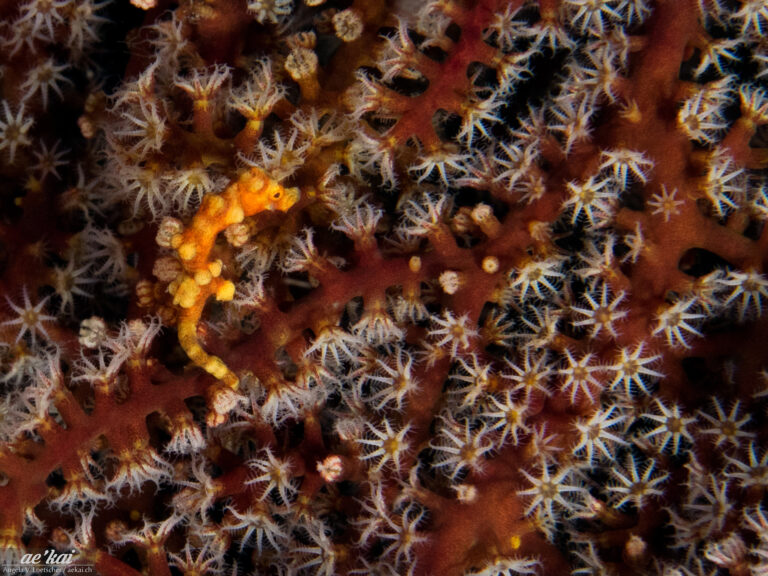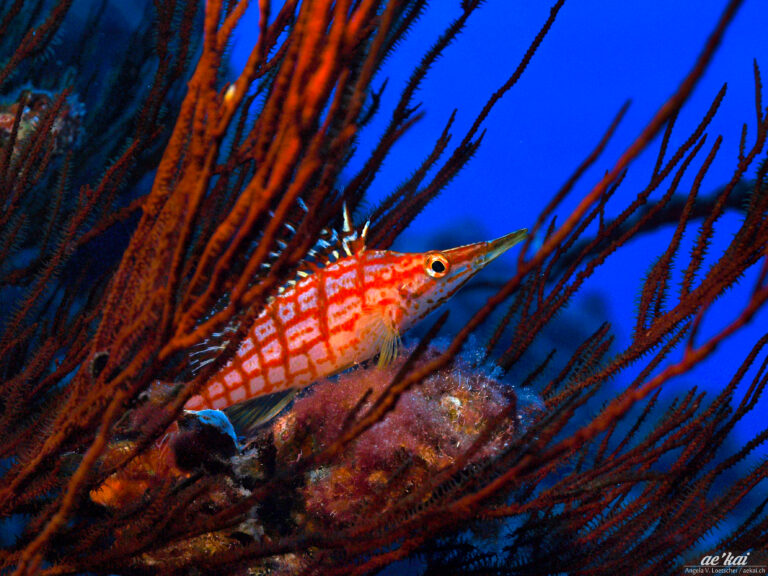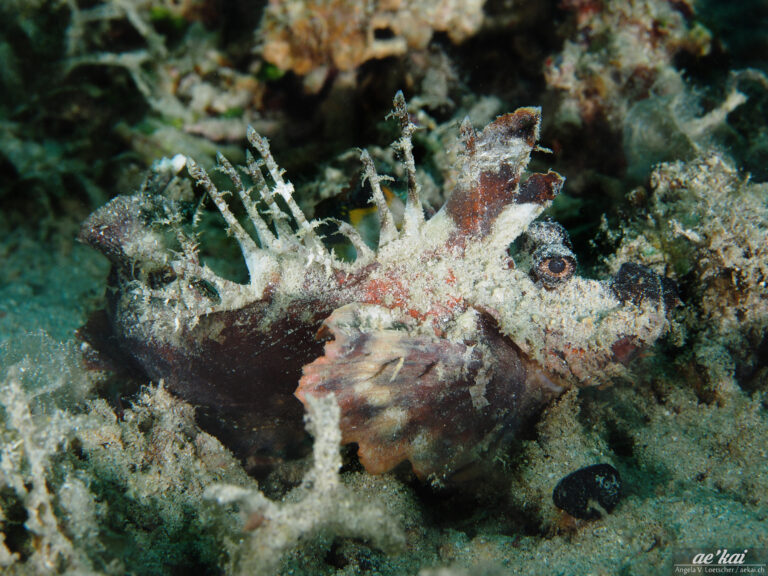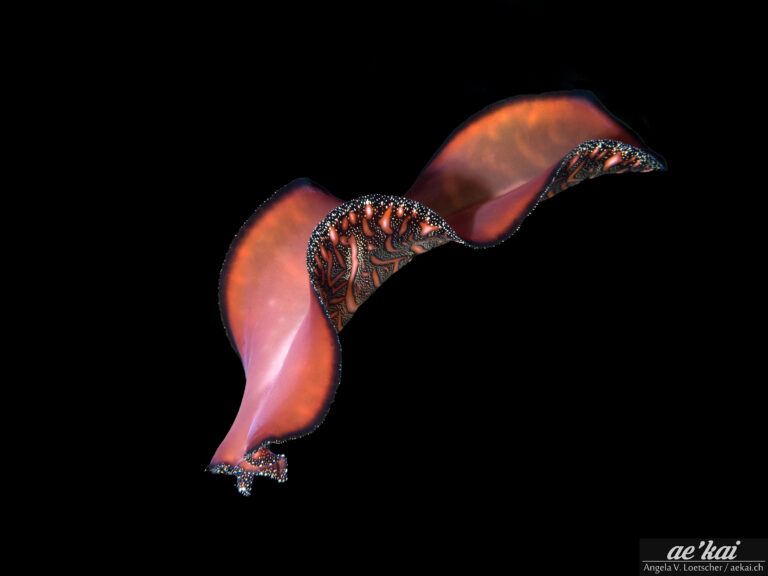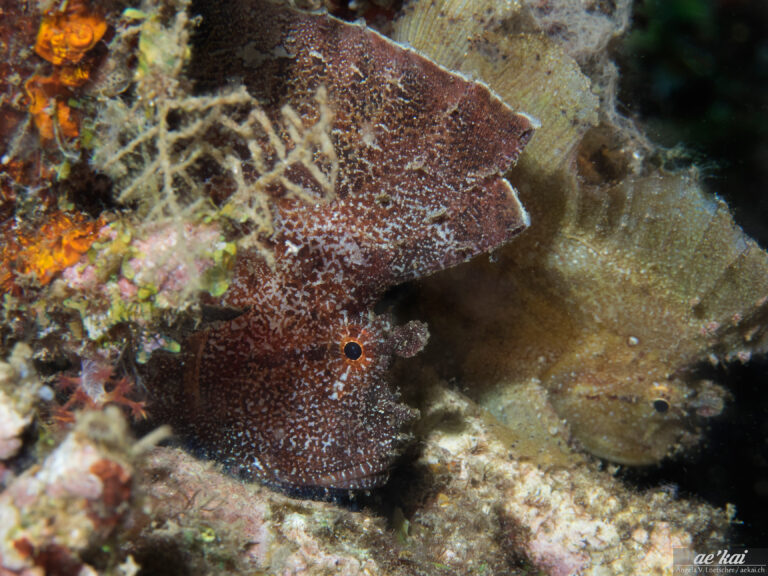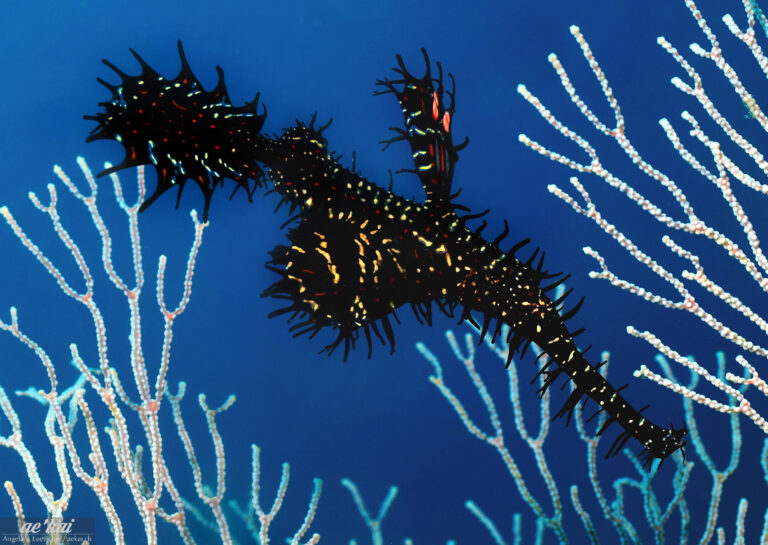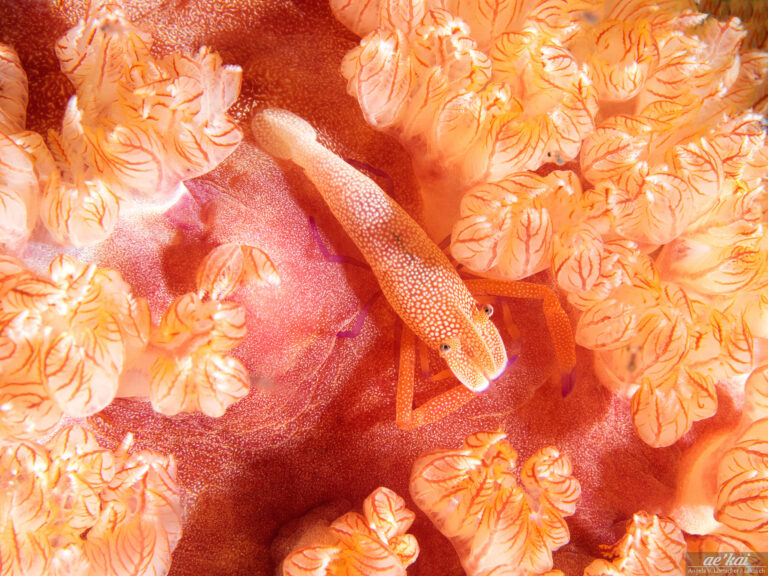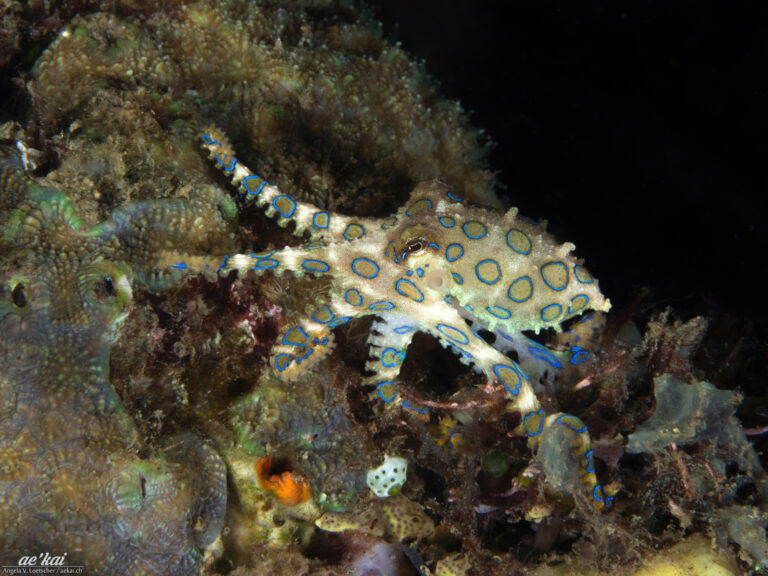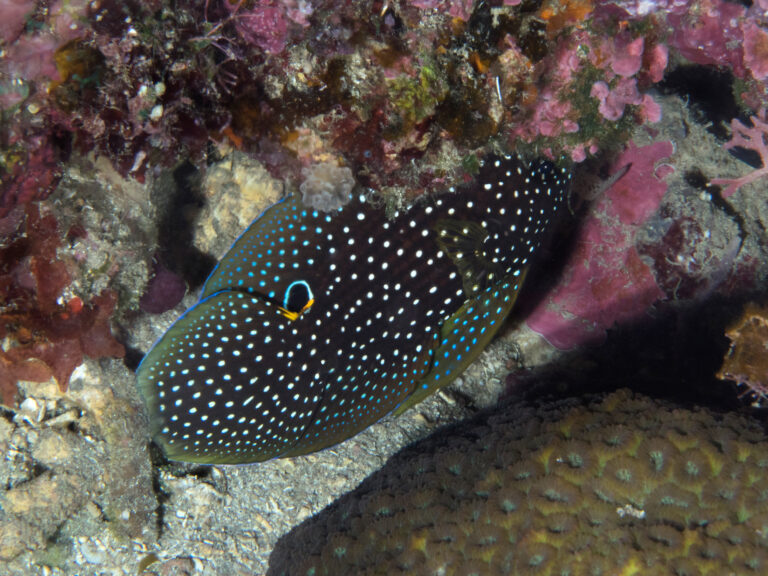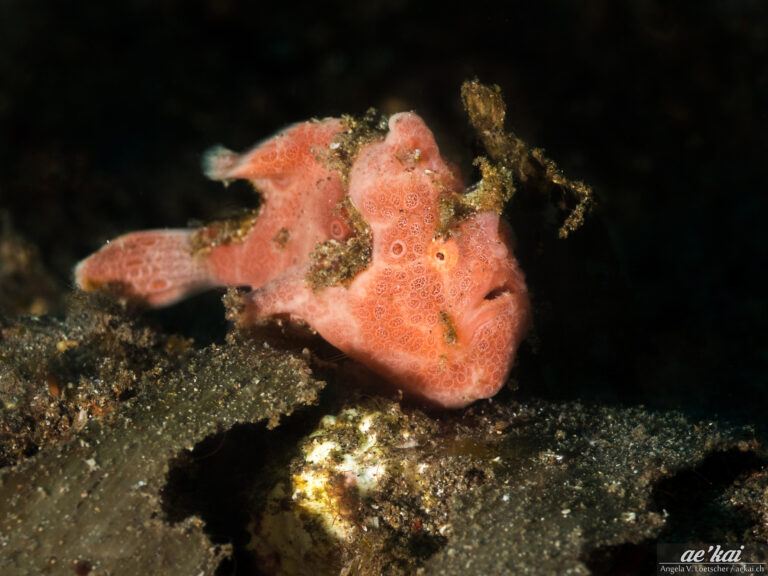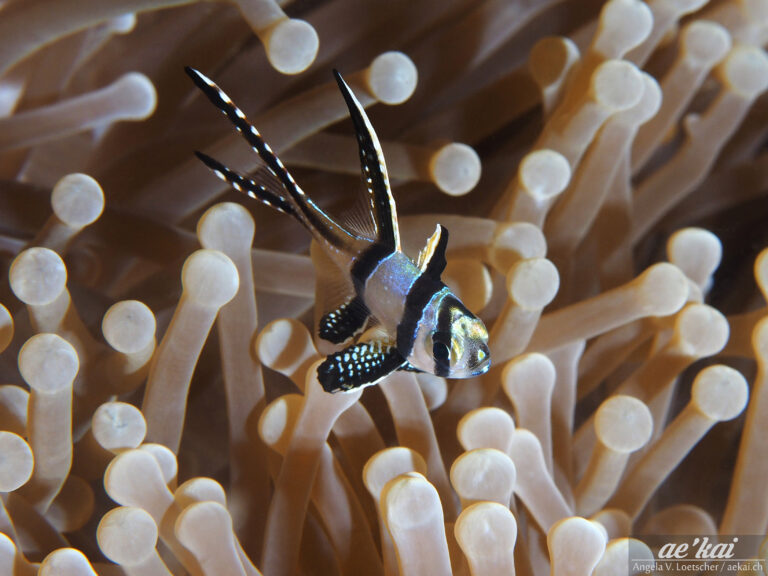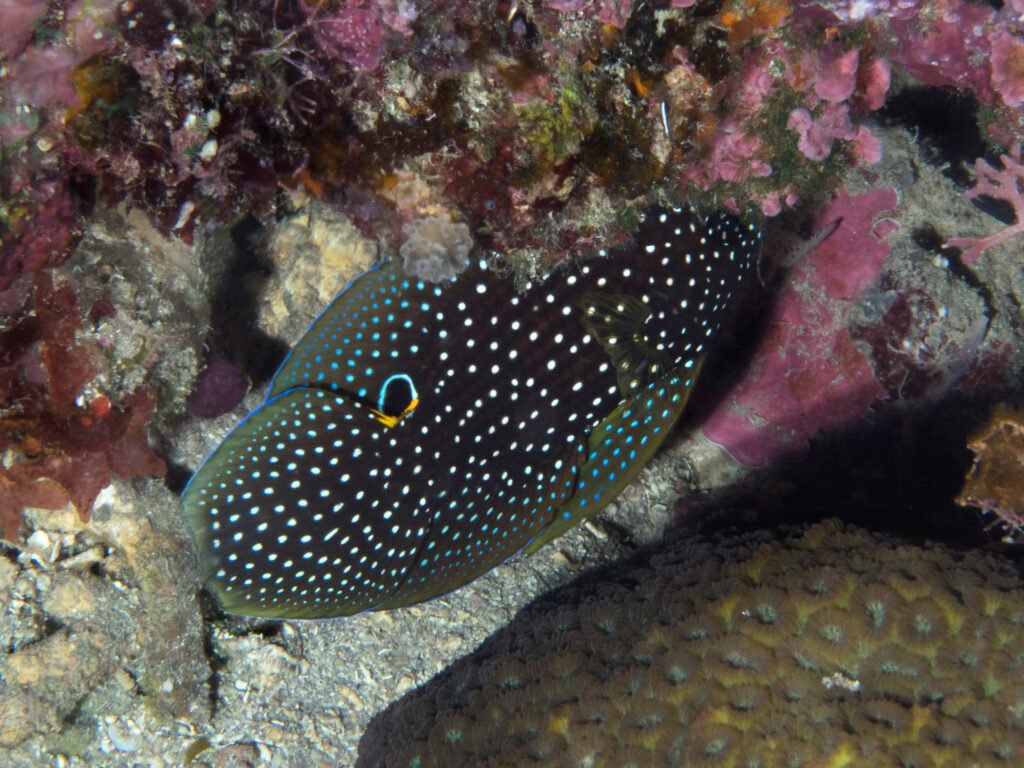
EN: Comet | Marine Betta
DE: Echter Mirakelbarsch
Family
Longfins
(Plesiopidae)
Size
max. 20 cm
Diet
Crustaceans &
small fish
Distribution
sub-/tropical Indo-Pacific
The Comet (Calloplesiops altivelis) belongs to the family of the Longfins (Plesiopidae) aka Roundheads. Like all Longfins, it occurs in reefs in the tropical and subtropical Indo-Pacific in depths of up to 50 m (usually shallower).
It is an elongated fish with a blunt rounded head, a large mouth and large eyes. Its body is dark brown to black colored and, except for some patches with blue spots, completely covered with white spots. At the caudal fin it has a so called ocelli, a black colored and yellow-blue-white bordered spot, which looks like an eye. The caudal fin is diamond shaped. The long extended ventral fins give this fish its comet-like appearance. The pectoral fins are transparent and have clearly visible yellow fin rays. The ventral fins of the male are significantly longer. Adult males are usually more bulky than females around the head and neck area.
This decorative fish really deserves its English common name “Comet”, because it is very strikingly colored. This coloration is not by chance, but imitates the coloration of a White Mouth Moray (Gymnothorax meleagris) almost perfectly. The ocelli serves as an imitation of a moray eel eye (mimicry, more about this under “Behavior”). It can grow up to a length of 20 cm, but is usually more commonly found to be about 16 cm long. From some specimens it is known that they can live up to 20 years.
Behavior
If C. altivelis is frightened by larger fish or predators, it immediately disappears into a small cave and then slowly comes out again, but with its backside and spread out tail fins. The ocelli is more towards the back of the flank and this behavior makes it looks like a stately White Mouth Moray is sticking its head out of the cave. The spread-out fins also reveal a gap between dorsal and caudal fins, so that even the open mouth of the moray eel is imitated. This is usually enough to get rid of predators or cheeky fish immediately. C. altivelis is nocturnal and only really gets going after dusk. During the day it hides in small caves and crevices, because this fish is very, very shy. It is considered very rare because it leads a rather cryptic life and is rarely sighted.
It lives predatory and is, unequal to other, algae-eating Longfins, a carnivore. Its main diet includes fish and small crustaceans. C. altivelis is an ambush predator, which usually stalks its prey sideways, with the help of the pectoral fins, in order to then strike at the right moment. Out of fear of the ocelli, the prey usually flees towards the mouth of the Longfin
Reproduction
The probably hermaphroditic Comet mates in the protection of caves and crevices. The female then lays hundreds of eggs in form of a sticky egg mass in the cave, where they are guarded by the male. After five to six days (temperature-dependent), the juveniles hatch. The hatchlings are very dark in color, about 3 cm long and immediately able to eat normally. After about two weeks they lose their colored pigments and turn completely white. After another two months the head is dark again and white spots start to show. With seven months the dark color follows all over the body and the rest of the special coloration also sets in.
